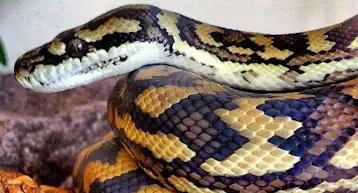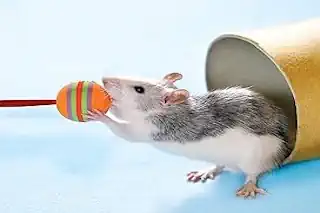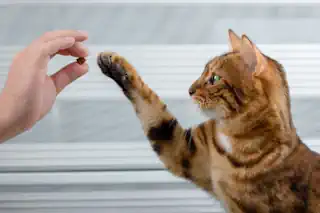Training your Feathered Friends: A Complete Guide to Bird Obedience
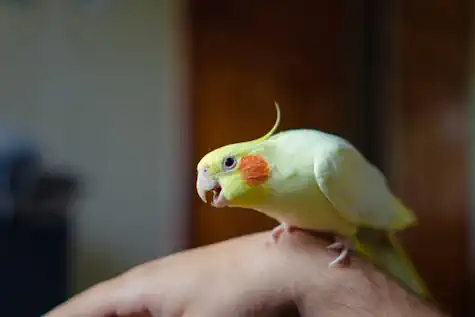
Training your bird can be an incredibly rewarding experience. Not only does it deepen the bond between you and your avian companion, but it also provides mental stimulation and enrichment for the bird, and can even help keep them safe. In this guide, you will learn the main techniques for training any bird, irrespective of its size or species, to follow basic commands and behave in a predictable, positive manner.
Introduction to Pet Bird Training
Training your bird goes beyond simple mechanical tasks; it builds trust, strengthens the relationship, and fosters a sense of teamwork between owner and bird. This is especially important for the emotional well-being of the bird, as it mimics natural behaviors such as foraging and flight. For the owner, it ensures the bird’s safety and enhances the joy of pet ownership. It’s an adventure you and your feathered friend can both enjoy.
Preparing for Training
Before you start training, it’s crucial to set up the right environment. Birds are sensitive to their surroundings and can be easily distracted. Ensure the training space is quiet, well-lit, and free from potential hazards. This could be a special training room, or if you’re just starting out, one small, quiet section of the main room.
Understanding Your Pet Birds
Every bird is unique, and so is their way of communicating. Learning your bird’s cues and body language is key to successful training. Look for signs of their comfort, curiosity, and stress. Tail wags, pupil dilation, feather fluffing, and vocalizations are all ways your bird could be expressing its mood.
Commands for Basic Training Sessions
Start simple and build up. Keep each training session short as you train your bird. There are a few basic commands that form the foundation of bird training:
Recall: Teaching your bird to come to you on command.
Target Training: Getting the bird to touch a designated target.
Perch Training: Encouraging the bird to go to its designated perch or area.
Each of these commands has a specific step-by-step approach that we will detail next.
Recall Training Session
Recall is arguably the most important command for maintaining control over your bird, especially in an emergency situation.
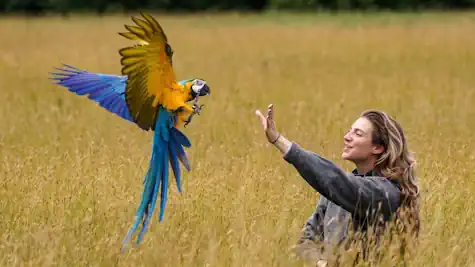
Step 1: Choose a Distinct Command
Decide on a word or sound you will use to call your bird. It should be clear, consistent, and not easily confused with other sounds you make.
Step 2: Initial Approach
When your bird is perched, take a few steps away and call their name using the recall command. If they respond and come to you, give them a treat and lots of praise.
Step 3: Increasing Distance
Slowly increase the distance between you and your bird. Always ensure they have a clear path to you and that they don’t feel cornered.
Step 4: Adding Distractions
Once your bird reliably comes when called, introduce mild distractions like mild noises or moving objects. If your bird gets distracted, go back a step and work your way up again.
Target Training Session
Target training is a fun way to keep your bird engaged and active.
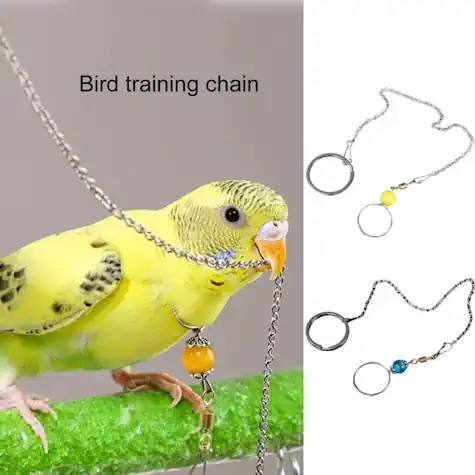
Step 1: Introduction to the Target Stick
Show the bird a target stick, which can be as simple as a chopstick with a colorful top. When they investigate or approach it, give them a treat.
Step 2: Touch the Stick
Place the stick close to the bird, and when they touch it with their beak, give them a treat and praise.
Step 3: Extend the Reach
Gradually increase the distance you ask your bird to target. You can even guide them around a room with the stick.
Perch Training Session
Perch training is a handy command that makes moving a young bird(s) around the house or into their cages, much easier.
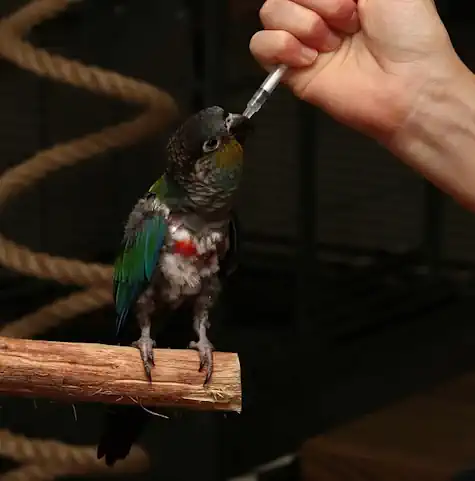
Step 1: Identify the Perch
Show the pet bird the perch you want them to go to. When they look at it or approach it, reward them.
Step 2: Step Up
Encourage the bird to step onto the perch with a command and gentle pressure on their chest. Reward them for doing so.
Step 3: Transition
Slowly increase the distance between the bird and the perch, always rewarding them when they make the trip.
Positive Reinforcement Training
For bird training to be successful, you must use positive reinforcement for each desired behavior. Every time your bird responds correctly, reward them immediately with a treat and plenty of positive attention. This process conditions your bird to associate the command with a pleasurable outcome, making them more likely to repeat the behavior. Both you and your bird learn to love to spend time together.
Bird Lovers Must Have Consistency and Patience
Consistency in your training routine and the application of commands is vital. Train frequently, but keep sessions short and sweet, as birds can easily become bored or stressed. Patience is also key, as each bird will learn at its own pace. Some commands may take several training sessions for your bird to master.
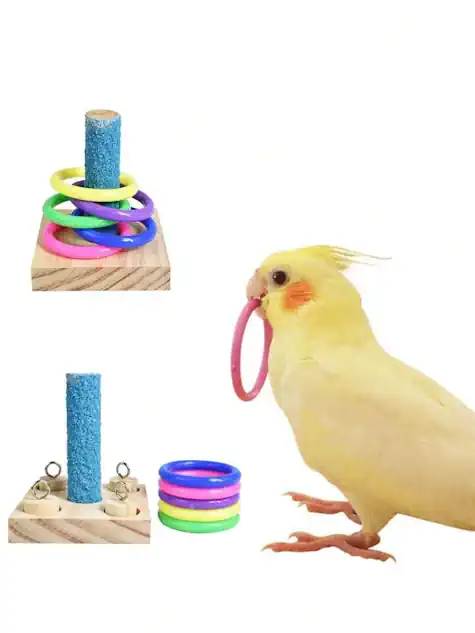
Troubleshooting
Common challenges with bird training include:
Fear: If your bird becomes afraid, back off and give them time to calm down before trying again in a less distressing manner.
Distractions: If your bird is easily distracted, work in smaller steps or in a quieter, more controlled training area. Avoid sudden movements that will startle your bird. Keeping your bird’s interest can be a challenge if there are lots of distractions.
Aggression: If your bird is showing signs of aggression during training, consult with an avian veterinarian or behaviorist for professional help.
Celebrating Success
When your bird successfully follows a command, celebrate! This doesn’t have to be with treats each time, but could be pats, soft words, or simply acknowledging their accomplishment. Positive feedback reinforces the behavior you want them to maintain and further cements your bond. Talk to your bird a lot. Human speech, especially from their owner, can be very comforting for them.
My first bird was a Cockatiel. He would sit on my shoulder and rub up against my neck behind my ear. He loved to have is chin scratched and thought it was great fun to chase my pencil when I was writing. He stood on the steering wheel when I was driving and told me about every bird he saw. He was an awesome feathered friend.
Safety Considerations
Safety must be a top priority during bird training. Ensure that your bird is not forced into any behavior and is always treated gently and respectfully. Avoid stressing your bird or placing them in potential harm’s way. Never discourage or punish your bird during training, as this can lead to fear and aggression. Your bird’s cage should always be a sanctuary for them so avoid training sessions in the bird’s cage if possible.
When a bird bites they are telling you they are angry, upset, stressed, and/or frustrated. Many birds will bite until they become comfortable being held and touched. But even when comfortable, most birds will still bite if they feel unsafe. Birds like African grey parrots can bite hard enough to cut pieces off of fingers. Hence safety considerations are for us as much as they are for our pet bird.
Introduction of a new bird can also create unwanted behavior in your other bird(s). Consider a separate cage located close to your other birds’ cage for about a week to help them get used to the other birds and the human flock that is in your home.
Training your bird can be a fun and enriching experience for both of you. Start slow, remain patient, and always use positive reinforcement. Enjoy the progress you make together and celebrate the milestones. Remember, the bond you build through training is as important as the commands they learn. Happy training!
Frequently Asked Questions (FAQ)
How long does it take to train a bird?
The time it takes to train a bird varies depending on the bird’s age, temperament, and previous training experience. Consistency and patience are key. Some birds may respond to basic commands within a few days, while others might take several weeks or longer to master the same skills. Reward good behavior and avoid punishment.
Can all bird species be trained?
Most bird species can be trained, but their capacity for training and the types of tricks or commands they can learn vary widely. Parrots, for instance, are known for their high intelligence and ability to learn complex tricks and vocalizations. Baby birds are usually easier to train than older birds.
What should I do if my bird doesn’t respond to training?
If your bird isn’t responding to training, take a step back and assess the situation. Ensure the training sessions are short and engaging, the rewards are desirable, and that there are no distractions. Sometimes, adjusting your approach or the training environment can make a big difference. Patience and consistency are crucial.
How can I tell if my bird is stressed during training?
Signs of stress in birds include feather-ruffling, panting, vocalizing excessively, attempting to flee, and aggression. You need to understand your bird’s body language. If your bird shows these signs, decrease the intensity of training, shorten the training sessions, or give them a break.
What are the best treats to use for training?
The best treats are those that your bird finds irresistible yet aren’t part of their regular diet. This can include small pieces of fruits, vegetables, or nuts, depending on the bird’s dietary needs and preferences. It’s important to keep treat portions small to avoid overfeeding.
Is it better to train a bird alone or with others around?
Initially, it’s better to train a bird in a quiet, distraction-free environment to help them focus. Once they have mastered a command, you can gradually introduce mild distractions or other birds, but training one-on-one is generally the most effective approach to ensure they can concentrate on your commands.
Can old birds learn new tricks?
Yes, older birds can learn new tricks! The adage that “you can’t teach an old bird new tricks” is a myth. While younger birds may learn more quickly due to their natural curiosity and adaptability, older birds are equally capable of learning. The training process might just require a bit more patience and time. Some species are incredibly intelligent and can be trained at any age.

